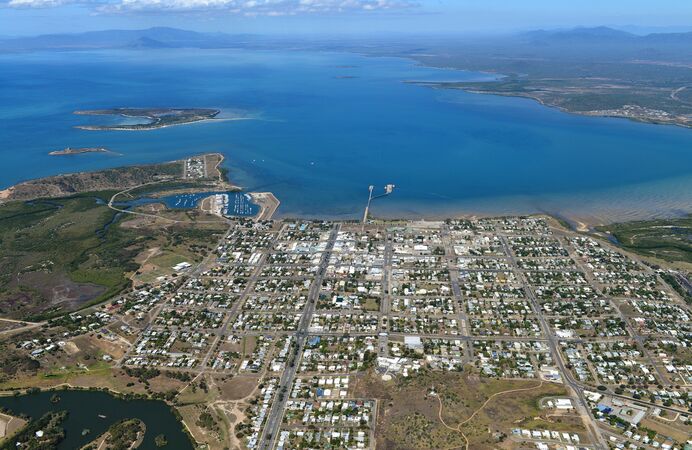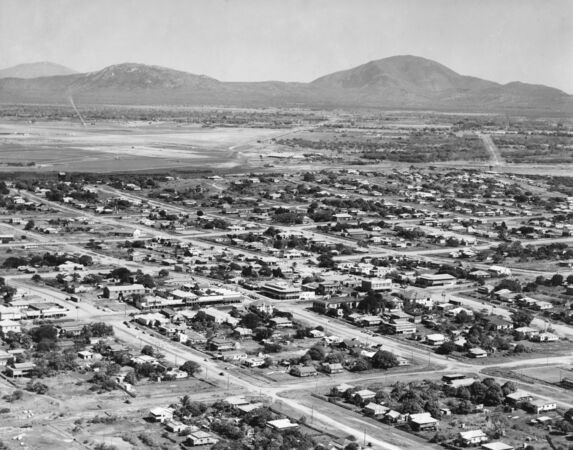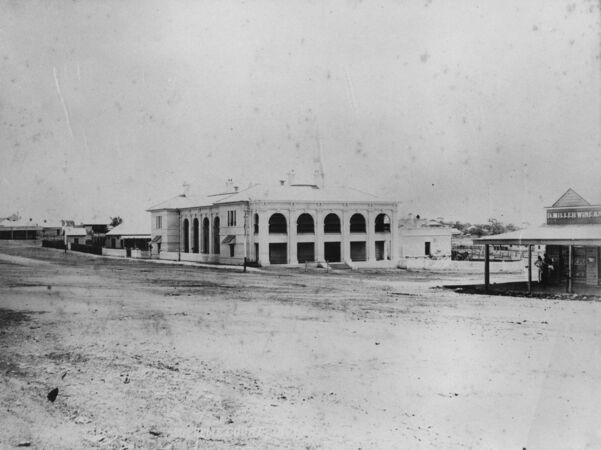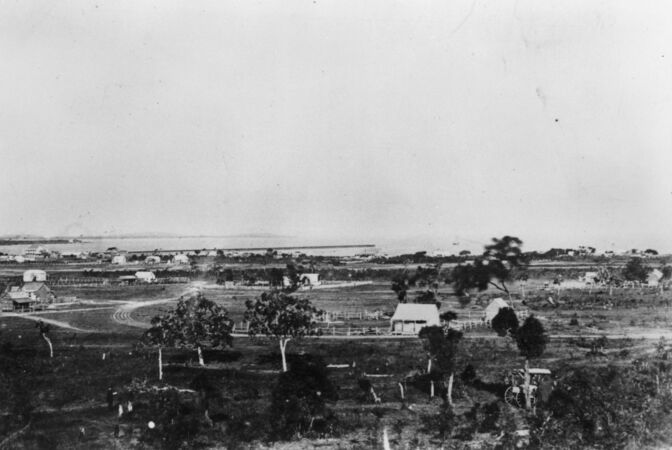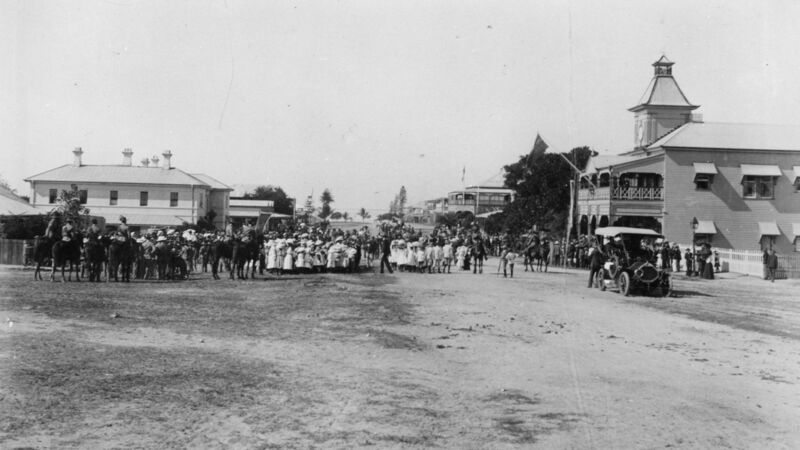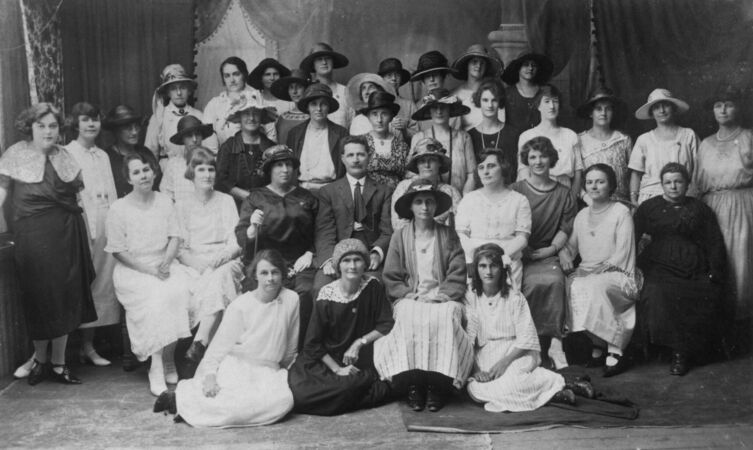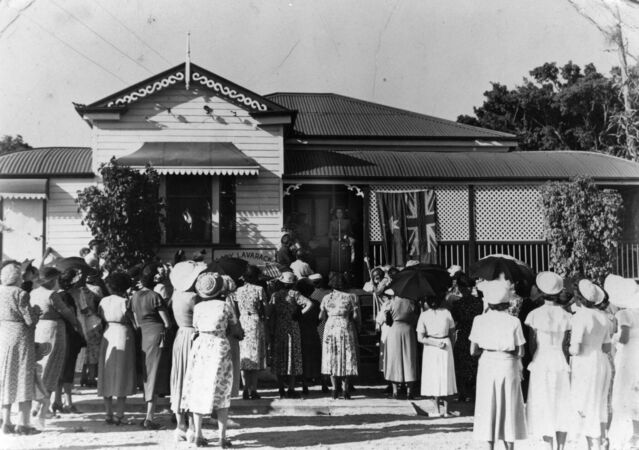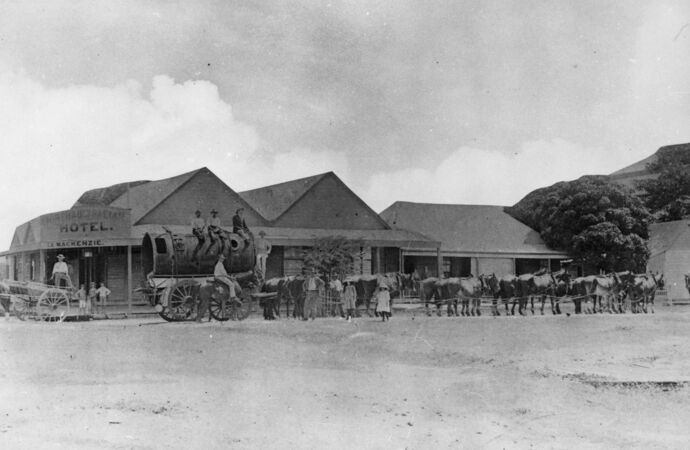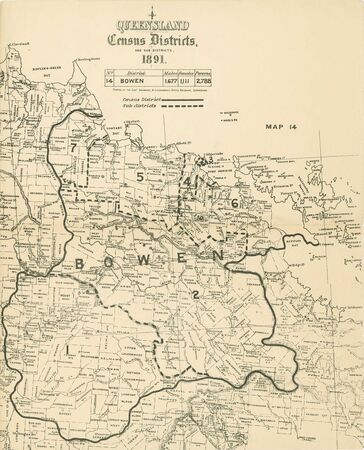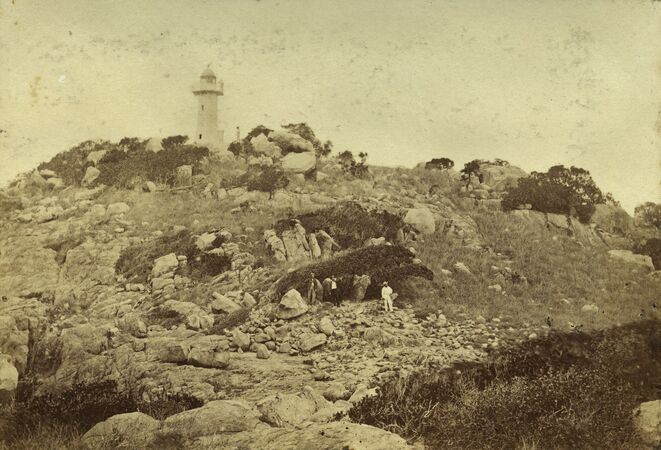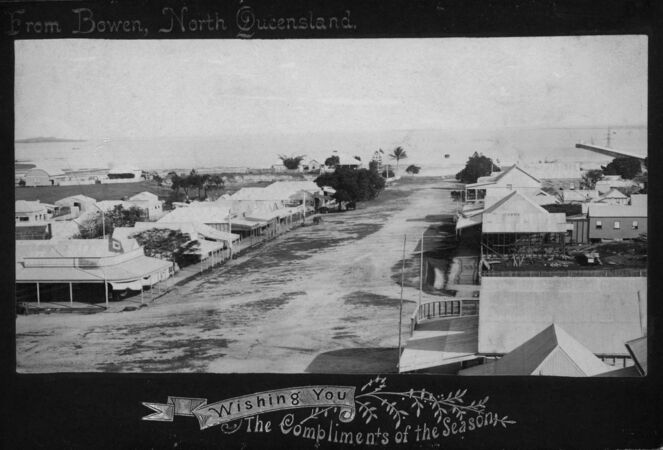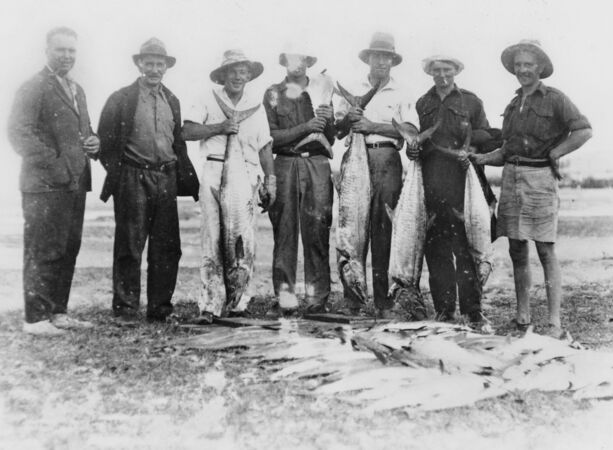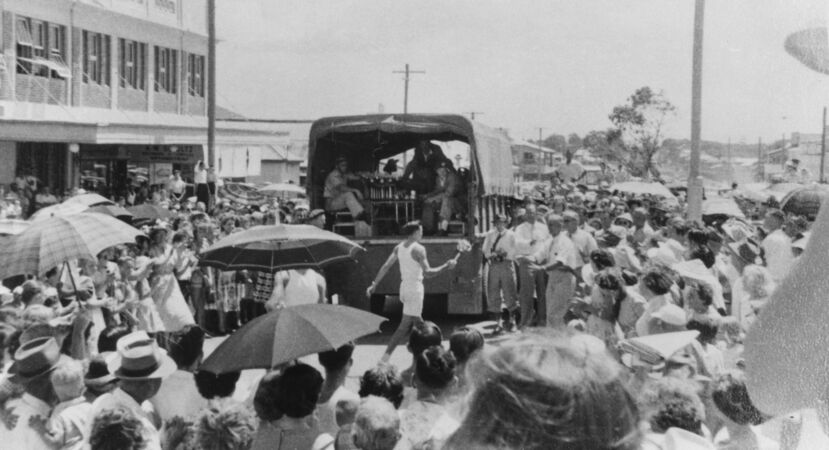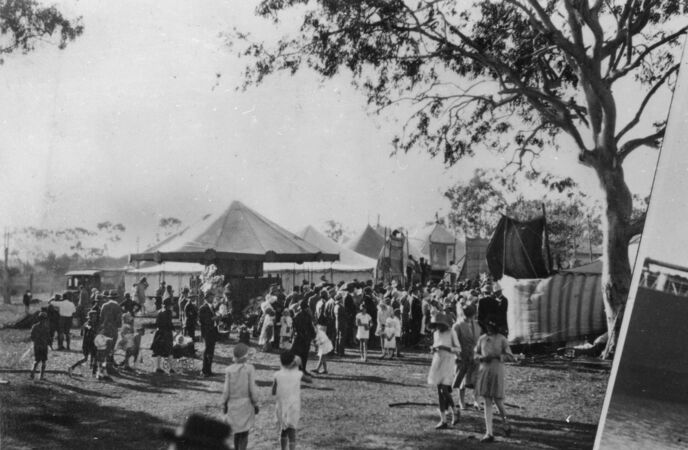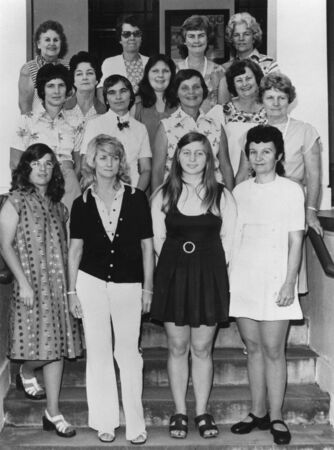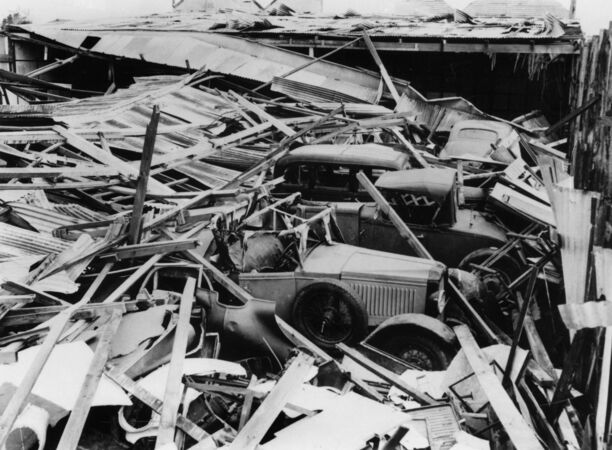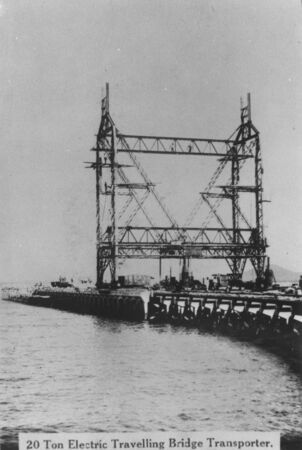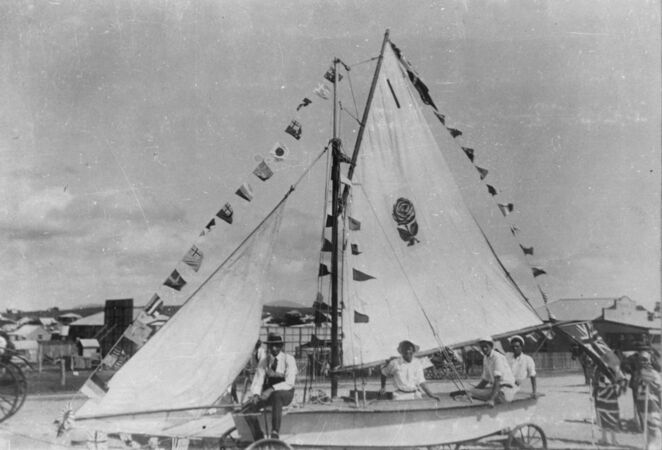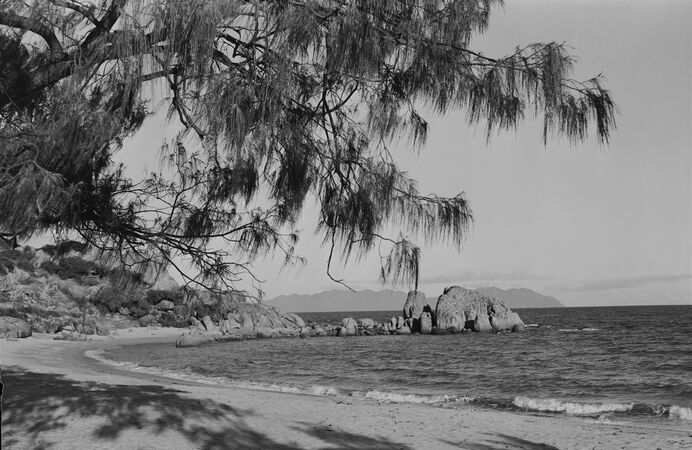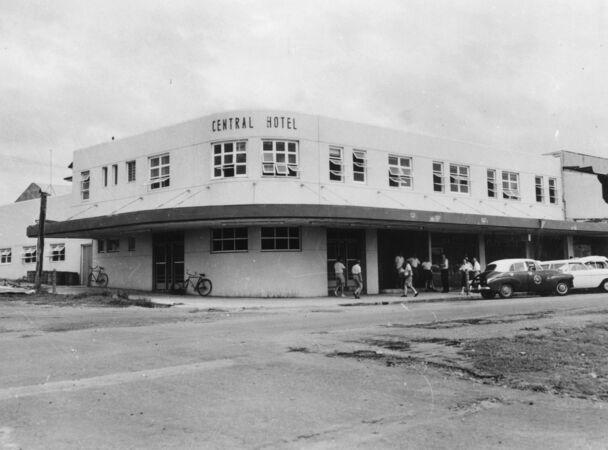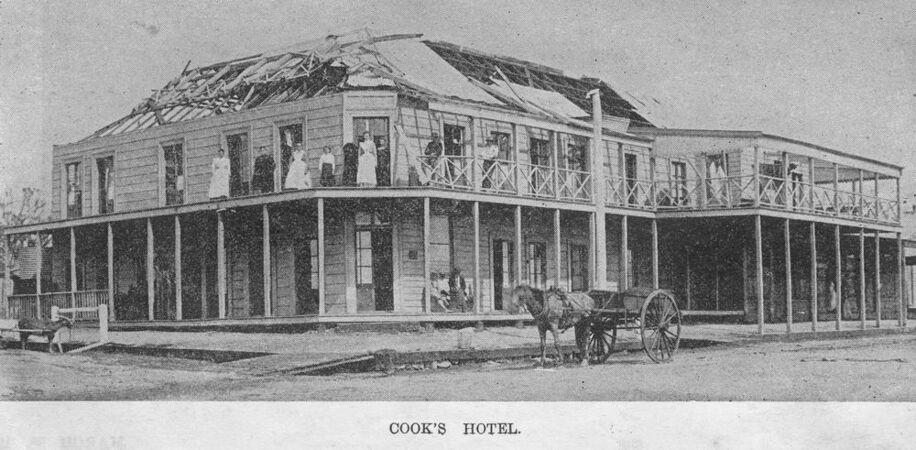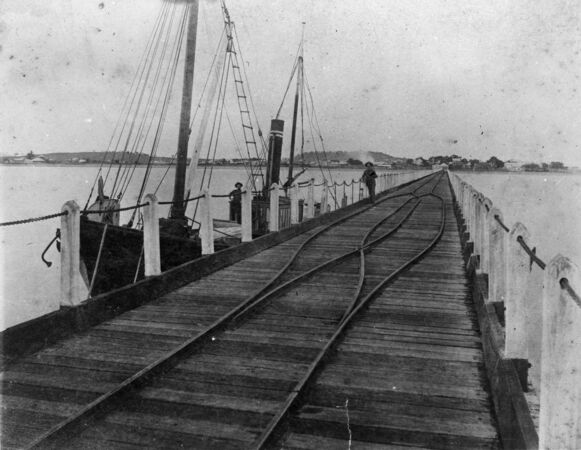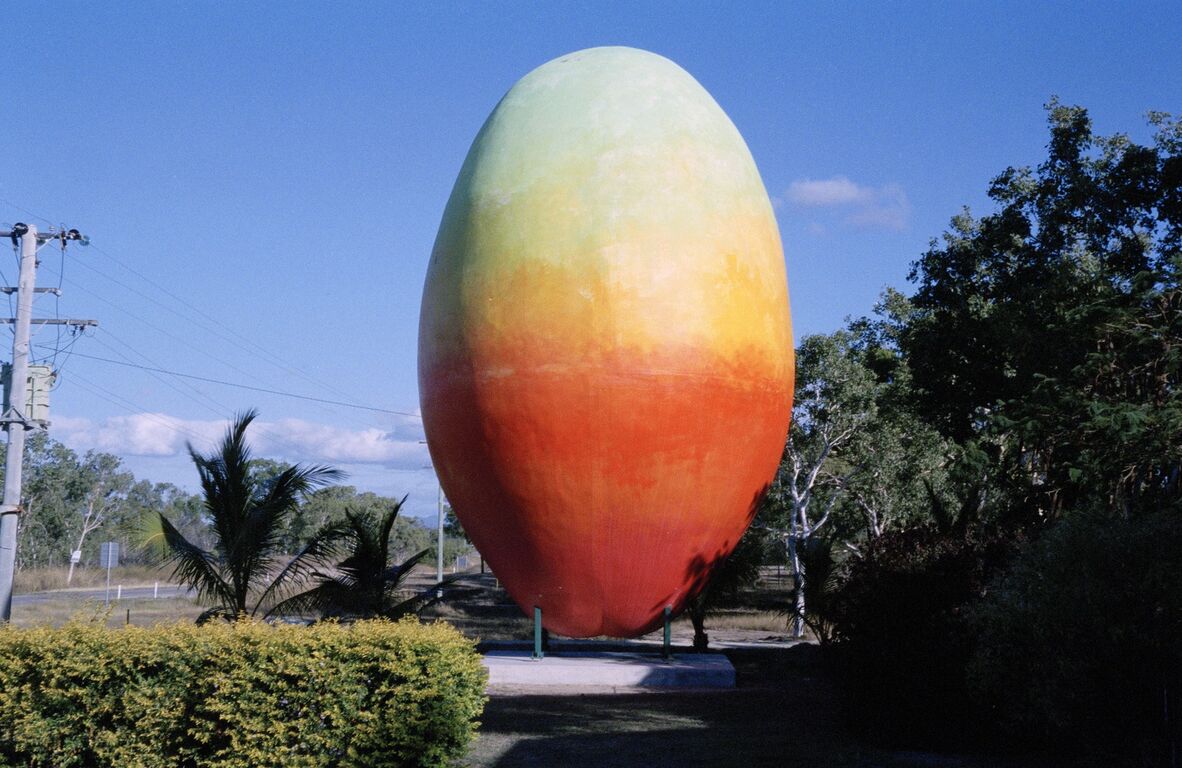
The Big Mango, Bowen, Queensland, 2007, John Immig, John Oxley Library, State Library of Queensland. Image 6502-0001-0011.
The North Queensland seaside town of Bowen is home to one of Queensland’s best-known ‘big things’.
The Big Mango was unveiled in 2002 to entice northbound visitors to venture off the Bruce Highway and into a town that has become synonymous with the exotic tropical fruit.
‘Bowen may not be known throughout the land for its numerous other claims to fame – its scenic beauty, its temperate climate, its laid-back lifestyle, its unique first place in North Queensland history. But throughout Australia, when you mention the name Bowen, people think Mango!’ writes Ann Wills for Bowen Historical Society & Museum Inc. in Bowen Mangoes.
Australia’s first mangoes were grown in Bowen in the 1860s from seeds believed to have been brought from India. They were as sought-after as they are today:
‘We are told that the wholesale buyers in Brisbane offer the magnificent price of one shilling six pence per dozen for them [Bowen-grown mangoes], then retail them at one shilling each.
Port Denison Times editor Frederick Rayner, 1881
Henry Bankhead Lott is credited as the first grower to commercially cultivate the Bowen Special, or Kensington Pride, on his Bowen farm, Kensington, in the early 1900s.
Lott is said to have zealously guarded his varietal for the southern market, refusing to sell them in Bowen and making his mango-munching visitors leave the seeds behind.
Where is Bowen?
Bowen, the northern gateway to the Whitsundays, is 204km south of Townsville and 1156km north of Brisbane.
The Juru (Yuru) people of the Birri Gubba nation are the Traditional Owners of land and sea Country at Bowen, with a history extending back tens of thousands of years. Gia (Giya), Jangga (Yangga), Birriah and Ngaro peoples also have connections to the region.
Proclaimed in 1861, Bowen was the first town to be settled by Europeans in North Queensland.
Bowen Court House, built in 1880, was Queensland’s first Supreme Court outside Brisbane. The Northern Supreme Court moved to Townsville in 1889.
Bowen Historical Museum in Gordon St preserves artefacts from the region’s First Nations and colonial past. An 1872 cottage, moved to the museum grounds from from Moss Vale Station in 1972, houses relics from the museum collection.
Bowen the beautiful
Bowen’s picturesque beaches, fringing reefs and mild, dry winters attract droves of southerners escaping the southern chill.
A 1935 Bowen Chamber of Commerce brochure titled ‘Bowen the beautiful’ highlighted the town’s attributes:
‘Magnificent harbour. Unsurpassable climate. Wonderful scenery. A sportsman’s paradise.’
‘MOTOR TRIPS – The following beauty spots should be visited: King's Beach, Queens Beach, Cape Edgecumbe, Horseshoe Bay and Rose Bay, besides which a drive around the farms and orchards is always delightful.’
Bowen the beautiful: a tourist resort
Bowen Chamber of Commerce brochure circa 1935
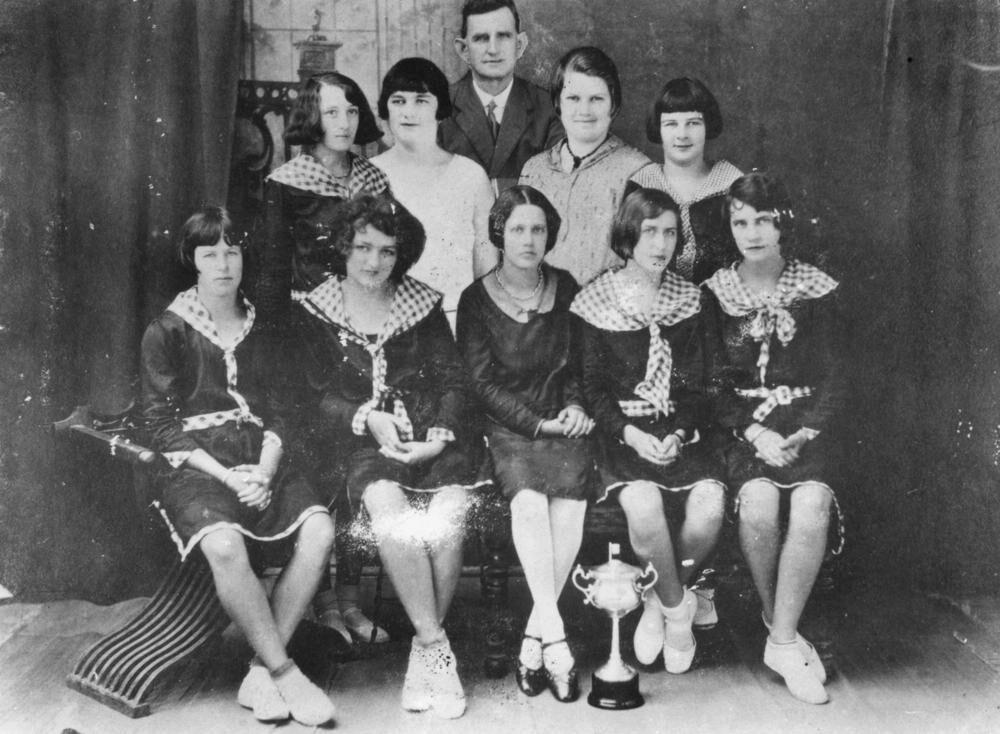
Members of the Checkers basketball team, Bowen, Queensland, c. 1930. Team members left to right: Vera Doolan, Topsy Barry, Violet Hansen, Irene Ryan, Fran Ryan, Melda Goldup, Agnes Malone, Ethel Lowcock, Dot Wilson. The man standing behind the team is unidentified. John Oxley Library, State Library of Queensland. Image 25432.
People and places: 6 snapshots of Bowen history
1.
In pursuit of a £2000 New South Wales government reward, Captain Henry Daniel Sinclair sailed north on the Santa Barbara in 1859 to find a site suitable for a new port north of Rockhampton. He put forward ‘a most splendid harbour ... formed partly by islands and partly by an elbow of mainland’.
He named it Port Denison, after the then Governor of NSW. When a settlement was established at Port Denison 2 years later, it was renamed for the first Governor of Queensland, Sir George Ferguson Bowen.
The reward was never paid. Queensland had separated from NSW, its coffers were empty, and the NSW premier who had offered the reward was out of office. Sinclair was appointed as Bowen’s first harbour master.
He drowned at age 50 when his boat, the Flying Cloud, capsized during a race in Townsville’s Cleveland Bay in 1868.
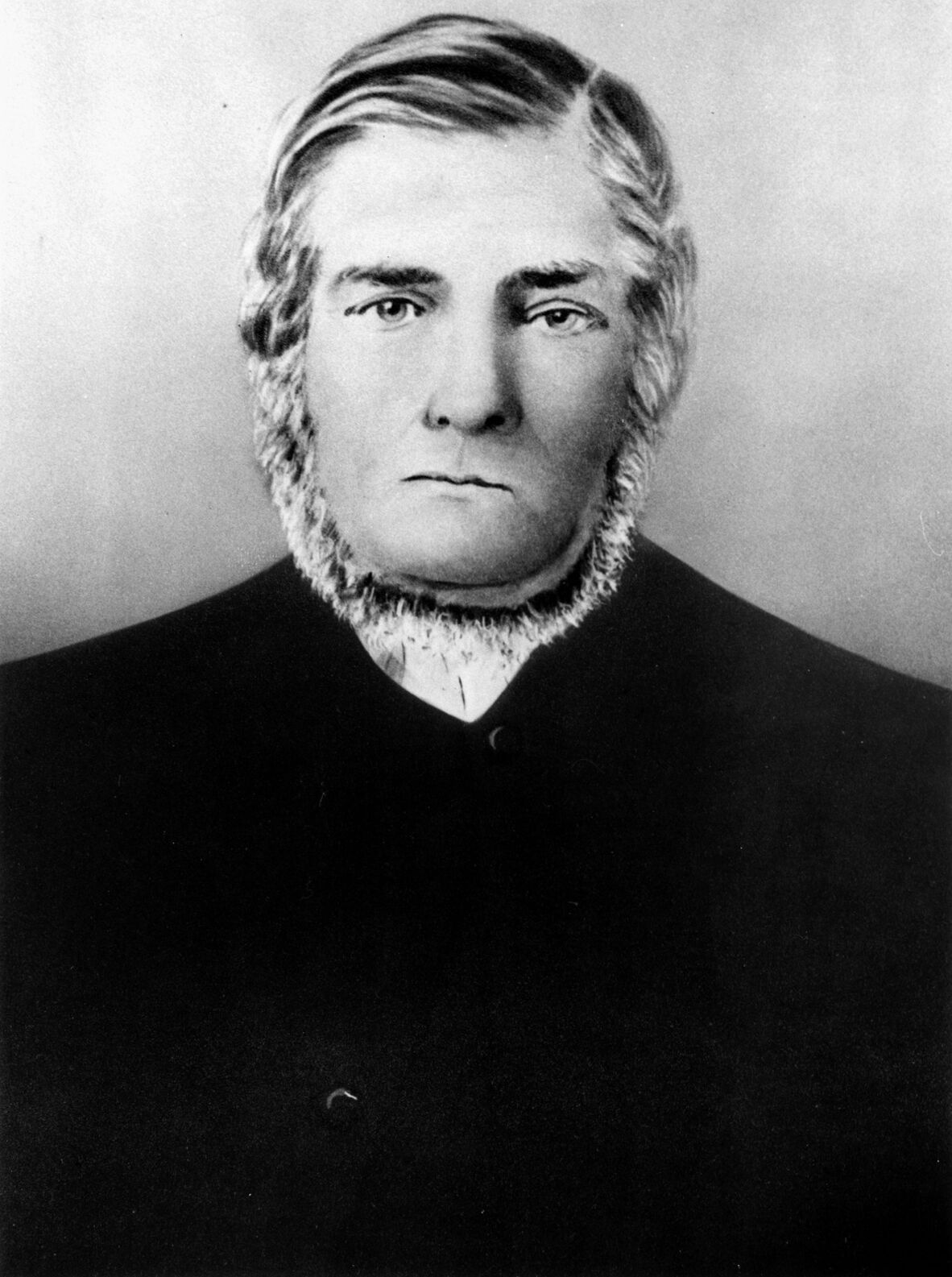
Captain Henry Daniel Sinclair. John Oxley Library, State Library of Queensland. Image 25481.
2.
‘Don’t shoot, mates. I’m a British object,’ shipwreck survivor James Morrill is reported to have told station hands when he emerged from the bush in 1863 in the Burdekin district.
For the previous 17 years, the English seaman had lived with First Nations peoples in the Townsville-Bowen area. Morill and fellow castaways spent 42 days on a raft after the Peruvian broke up on the reef west of New Caledonia in 1842.
He found refuge with Birri Gubba people, witnessing the frontier violence as pastoral settlement encroached in the 1860s. He proposed peaceful co-existence of First Nations peoples on the coastal wetlands and pastoralists on the open woodlands and grasslands. Morrill (1824– 65) is buried at Bowen Cemetery.
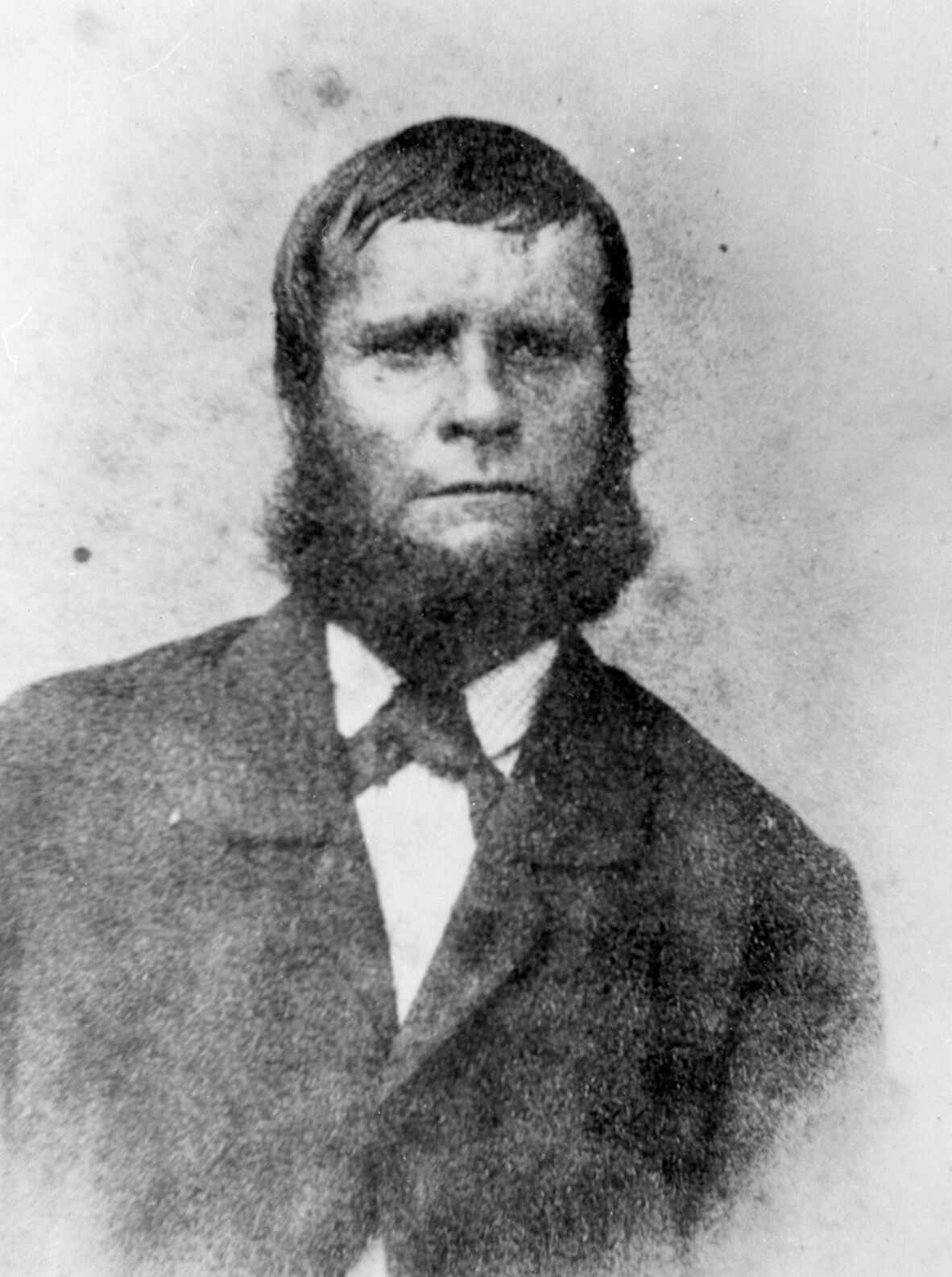
James Morrill, shipwrecked on the Great Barrier Reef in 1846, lived with the First Nations peoples between what would become known as Townsville and Bowen. John Oxley Library, State Library of Queensland. Image 13906.
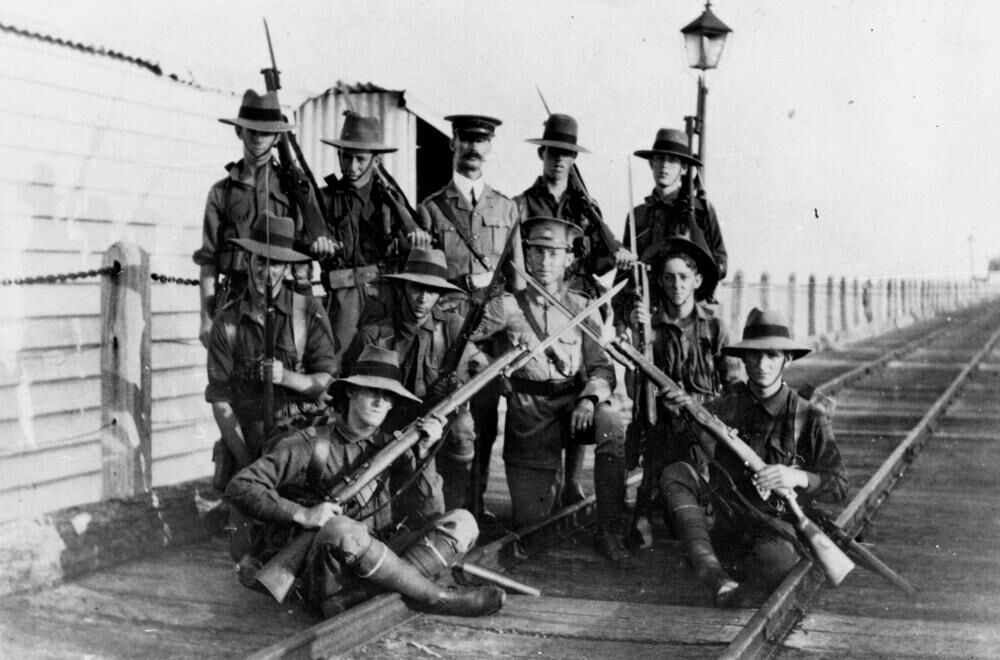
Guarding the jetty at Bowen during World War I. John Oxley Library, State Library of Queensland. Image 26877.
3.
After coming under attack from Japanese forces in Port Moresby, Catalina flying boat squadrons were moved to Bowen in 1942. Catalina pilots flew reconnaissance and bombing missions during the Battle of the Coral Sea.
Bowen hotels, shops and houses were repurposed to support the operations of the Royal Australian Air Force (RAAF) base. The town’s history as a base for RAAF amphibious aircraft dates back to the 1920s.
4.
Hooray for Bowenwood ... Bowen was transformed into 1940s Darwin in 2007 as the setting for Baz Luhrmann’s epic film Australia, starring Nicole Kidman and Hugh Jackman.
The Grand View Hotel was cast as the Territory Hotel, and Bowen’s waterfront was the backdrop for scenes depicting the WWII bombing of Darwin. Producers viewed the day’s rushes each night at the Summergarden, the local theatre, which had played a real-life role as a RAAF maintenance workshop during Bowen's time as a WWII base.
Australia premiered simultaneously in Bowen, Darwin, Kununurra and Sydney in November 2008.
5.
Yasso Point at Queens Beach is named after Bowen-born couple Jack (1880–1963) and Topsy Yasso (1881–1959). It recognises the South Sea Islander community whose labour contributed to the area’s development.
Jack’s and Topsy’s fathers were among the South Sea Islander men brought from Vanuatu in the late 1800s and early 1900s to work in indentured servitude on Queensland farms. Topsy was a member of the Stolen Generations, children whose forcible removal from their First Nations mothers was government policy.
One of Bowen’s many murals honours the Yassos and the South Sea Islander community.
6.
Ready for liftoff ... As home of the first orbital launch facility in Australia, North Queensland’s first port is now navigating the space age.
Gold Coast company Gilmour Space Technologies plans to launch satellites into orbit from the Bowen Orbital Spaceport, starting with its first rocket test launch in 2025.
The spaceport is 15km north of the town, in the Abbot Point State Development Area.
Game Changers with Gilmour Space
Watch Ashley Hasforth (Chief Financial Officer, Gilmour Space Technologies) and Kody Cook (Deputy Chief Engineer) in conversation with Kate O'Toole for the Game Changer series. Game Changers, a partnership between State Library and QUT, brings together inspiring figures from business, technology, and creative industries to share their insights with other passionate and curious minds. Watch more Game Changers conversations online.
Discover more about Queensland
Resources from State Library collections
Biri: A linguistic survey of Central Queensland area from Rockhampton to Townsville, 1998, Angela Terrill, John Oxley Library, State Library of Queensland.
Bowen has a place in air force history : twice an amphibious aircraft base, 1982, Bowen Independent, John Oxley Library, State Library of Queensland.
Bowen Mangoes, 2005, compiled by Ann Wills for Bowen Historical Society & Museum Inc., John Oxley Library, State Library of Queensland.
Bowen the beautiful: a tourist resort, c. 1935, Bowen Chamber of Commerce, John Oxley Library, State Library of Queensland.
Commemorative pilgrimage of significant sites: the Australian South Sea Islanders from Tweed Heads to Torres Strait, 2013 John Oxley Library Fellows Kathleen Fallon and Matthew Nagas.
From mandarins to mangoes : a history of farming in Bowen, North Queensland, 2007, Jan Rees, John Oxley Library, State Library of Queensland.
History of the port of Bowen, 1972, R.M. Steen, from a paper read to Bowen Historical Society, John Oxley Library, State Library of Queensland.
Plan of the town of Bowen, Port Denison, 1869, Surveyor General's Office, John Oxley Library, State Library of Queensland.
Sinclair’s reward, Bowen Independent, 22 November 1946, Trove website.
The story of James Morrill, 1964, Bowen Historical Society, compiled by the Bowen Independent, John Oxley Library, State Library of Queensland.
World War II Historic Places, Bowen Royal Australian Air Force (RAAF) Flying Boat Base.
Comments
Your email address will not be published.
We welcome relevant, respectful comments.
